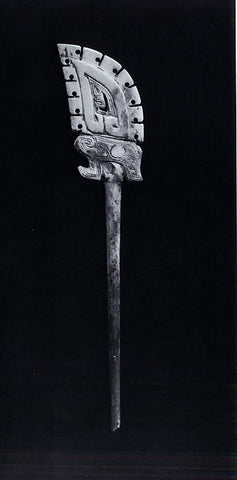8% off orders over $100, 15% off orders over $150, 20% off orders over $300.
Menu
-
- Specials
-
Types
-
Symbols
- Auspicious Cloud | Heaven
- Lotus | Purity & Elevation
- Phoenix | Rebirth and Fidelity
- The Nine | Eternity and Completeness
- Bamboo | Strength and Resilience
- Ruyi | Wish Fulfillment
- Moon | Mystery & Elegance
- Herbal Locket | Hidden Protection
- Tassel | Elegant Charm
- Butterfly and Flower | Love
- Plum Blossom | Endurance and Resilience
- Chinese Knot | Harmony, Tradition, Legacy
- Pumpkin | Prosperity & Abundance
- Pipa | Celestial Music
- Hulu Gourd | Protection and Prosperity
- Fish | Prosperity
-
Collections
- Atlantis
- Revive Your Inner Kingdom
- Auspicious Origin
- Auspicious Flower
- Udumbara Flower
- Return to Origin
- Celestial Cloud
- Elf Forest
- Gold Lotus
- Serene Lotus
- Pearl Elegance
- Radiance
- Metropolis Hermit
- The Nine
- Moon Goddess
- Tassel Elegance
- Chic Velvet Choker
- The Cloud
- Lotus Leaf
- Realm of Peace
- Four Season
-
Craftsmanship
-
Gemstones
- Pearl | Purity and Wisdom
- Jade | Stone of Heaven
- Turquoise | Protection and Healing
- Tridacna | Realm of Peace
- Lapis | Truth and Enlightenment
- Rose Quartz|Love, Healing, Compassion
- Amethyst | Clarity and Tranquility
- Amber | Vitality and Protection
- Carnelian | Courage and Vitality
- Coral | Protection and Prosperity
- Tourmaline | Energy and Balance
- Crystal | Healing and Clarity
-
Birthstone
-
Style
-
Price
-
- Jewelry Set
- Necklaces
- Earrings
- Bracelets
- Hair Jewelry
- Glasses Chains
- Rings
- Anklets
- Ornaments
- Login
-
English

8% off orders over $100, 15% off orders over $150, 20% off orders over $300.
Behind the Design: Yun Boutique Chinese Hair Sticks
April 27, 2017 2 min read
Some of you may have noticed that here at Yun Boutique we have a category of jewelry that’s not commonly found in other shops: Hair jewelry.
Hair jewelry, especially decorative hair combs and hair sticks, was a quintessential part of personal adornment in ancient China.

Hair sticks have been worn as early as the Shang dynasty (1600 to 1050 BC), carved of materials like bone. This form of adornment reached its height of popularity in the Tang (AD 618–907) and Song (AD 960–1279) dynasties. By then, they were made in luxurious materials like gold, silver, jade, and other gemstones.
Since most people in ancient times grew their hair long, hair accessories were not only needed to keep hairstyles in place, but developed into an elaborate culture. It was such a widely understood visual language that one could tell a woman’s rank and marital status by the way she wore her hair.
Strict rules surrounded who could and couldn’t wear hair sticks. Generally, a woman is allowed to wear hair sticks after she comes of age at 15–20. Royal concubines who commit grave errors had their rights to wearing hair sticks revoked. On the other hand, hair sticks were common gifts from the emperor to his officials.
Hair sticks come in a wide variety of styles. Yun Boutique's Cloudy Mountain hair stick belongs to the category called “bu yao,” meaning “swings with steps.” The name describes the fact that the dangling decorations swing with each step, but it’s also an admonition—that one cannot successfully wear such a hair accessory without maintaining ladylike poise.
Produced and edited by Christine Lin. Researched by Ariel Tian.
Subscribe
Sign up to get the latest on sales, new releases and more …



